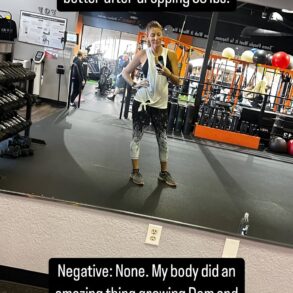It’s such a simple thing. A bottle with a note rolled into a cylinder and pushed inside. But toss them together into the wide ocean, set them adrift on the swells, and they become something else: a story awaiting an ending, an appeal to strangers, an adventure waiting to unfold.
This is the story of such a message in a bottle, deposited in the Atlantic Ocean, filled with the hope of a Cape Cod boy named Ben Lyons — a fifth-grader from Sandwich — that someone, somewhere, would find it, read his message and send back a reply.
Twenty-six years later, someone did.
Recently, a brown envelope mailed via La Poste France arrived at Sandwich Public Schools, addressed to Mr. Benjamin Lyons, “Grade 5H Annee 1997,” with a reply inside from retired French fisherman Hubert Eriau.

“The last week of October was when we received it,” said Sandwich Public Schools Superintendent Joseph Maruszczak on Wednesday. “It was sent to the Forestdale School, which was the address that was put into the message.”
At first, the staff wasn’t sure what to make of it.
“It was addressed to Ben Lyons in fifth grade at Forestdale School, but Forestdale is now a pre-K to second grade school,” said Brandy Clifford, assistant principal at the Oak Ridge School.
There was no Ben Lyons enrolled
When the envelope was forwarded to Oak Ridge, which now houses grade 5, the staff consulted the student data platform to figure out whose class Ben Lyons was in, “but of course they couldn’t find him,” she said.
“Then our secretaries were like, ‘all right, we can’t find this kid,’ so they opened the envelope and they found the letter that Ben initially wrote and a letter in French from the fisherman,” she said.
It was as if a pirate’s hidden booty had been discovered.
“You would have thought they found the bottle on the beach themselves, that’s how excited they were,” Clifford said. “It was like they’d uncovered a treasure.”
In 1997 a student pencils a note: ‘Dear Beachcomber’
It was 1997 when Ben Lyons, a student in Frederic Hemmila’s class at the Forestdale School, penciled a note that began, “Dear Beachcomber, Thank you for being kind enough to pick up my bottle.” It went on to explain he and his class were studying ocean currents in science class and they dropped bottles into Nantucket Sound to see where they went. It contained questions asking about where and when the bottle was found, and in what condition, and asked for a response to be sent to the Forestdale School.

On Aug. 11, Eriau found the bottle on the beach of Les Graviers in Les Sables-d’Olonne (Vendée), a seaside town on the Bay of Biscay in western France, according to the French newspaper Ouest France, which reported on his unusual find.
“Picking up rubbish on the beaches of Les Sables-d’Olonne (Vendée) is the daily life of Hubert Eriau, 71 years old,” the article reads.
In his response to Ben, written in French, Eriau tells how he found the bottle while picking up the beach during a fishing session, and that it had “quelques coquillage colles dessus” — some shells stuck to it.

Sandwich teacher, now retired, remembers the 1997 project
Hemmila, the teacher who had Ben Lyons in his class in 1997, remembers the project well.
“I did that project for a couple of years,” he said, talking by phone from Florida on Thursday.
He said at first they would put their messages seeking scientific information into the nearby Cape Cod Canal, and they’d always end up in places like Duxbury, Plymouth, Mashpee, Woods Hole, and other nearby locations. In 1997, the father of one of his students who was a commercial fisherman offered to deposit the bottles farther out, so they’d have a better chance of escaping the Massachusetts coast.
Bottles deposited 35 miles off Cape Cod coast
“He put them in about 35 miles out,” Hemmila recalled.
Within a couple of months, the students started to receive responses from further landfalls, including Ireland, Wales, France and Morocco.
“I have a scrapbook of all the letters that were returned to kids in that class at home,” said the Yarmouth resident.
After that year, Hemmila said, he stopped doing the project because of questions raised about the appropriateness of throwing the plastic bottles into the ocean. Hemmila thought that was the end of it, until the bottle showed up in western France.
“I am amazed that it took this long,” he said.
Adrift for more than a quarter of a century
Robert Todd, an associate scientist in the physical oceanography department at Woods Hole Oceanographic Institution, said he heard about the bottle, but didn’t initially realize it had been adrift for a little more than a quarter of a century.
“Clearly they did a good job sealing the bottle back in 1997 so that it could stay afloat all that time,” he said.

He noted that the large-scale average currents at the surface of the subtropical North Atlantic “are generally clockwise, moving along the U.S. East Coast in the Gulf Stream, across the Atlantic at about the same latitude of France, then generally southward on the eastern side of the Atlantic “and back to the west at tropical latitudes.”
“On this side of the Atlantic, one might imagine that it drifted out of Nantucket Sound, then generally southward over the continental shelf, since that is the typical direction of currents,” Todd said. “Somewhere along the way, and most likely no farther south than Cape Hatteras, NC, it could have been carried beyond the edge of the continental shelf and then entrained into the Gulf Stream to make its way north and east.”
Todd said the wonder comes in thinking about where the bottle drifted in the intervening years.
Multiple loops around the North Atlantic
“The ocean basin is filled with eddies that could have carried the bottle along any number of paths,” he said. “Given the long time, it’s quite possible that the bottle took multiple loops around the North Atlantic as well.”
Superintendent Maruszczak said he’s found the story inspiring, capturing attention from many media outlets, from People Magazine to the Boston news stations to The Boston Globe.
“I knew it was going to get a lot of attention,” he said. “It’s a cool story, and people want good news.”
Clifford also expressed amazement about the bottle’s 26-year journey. It’s fun to think about the bottle “bobbing around in the ocean,” she said, perhaps disturbed by the blow of a whale skimming the surface as it fed, nudged by a curious sea turtle, or pushed along by the passage of a fast-swimming shark underneath it.

At the school, Clifford said, “the students have seen (the letters), and have been asking a lot of questions.”
“I think it is really interesting for our kids to think about. Not that we can have them throwing things into the ocean, but it is kind of neat to think about just how far something can travel,” she said.
The school system did reach out to Ben Lyons and his family, and have turned over the envelope and its contents to them. Ben’s parents, who still live on the Cape, also expressed amazement and excitement. Ben Lyons, who addressed the letter to a “beachcomber” so many years ago, is now grown up and living out of state.
Heather McCarron can be reached at hmccarron@capecodonline.com, or follow her on X @HMcCarron_CCT
Thanks to our subscribers, who help make this coverage possible. If you are not a subscriber, please consider supporting quality local journalism with a Cape Cod Times subscription. Here are our subscription plans.
This post was originally published on this site be sure to check out more of their content.





